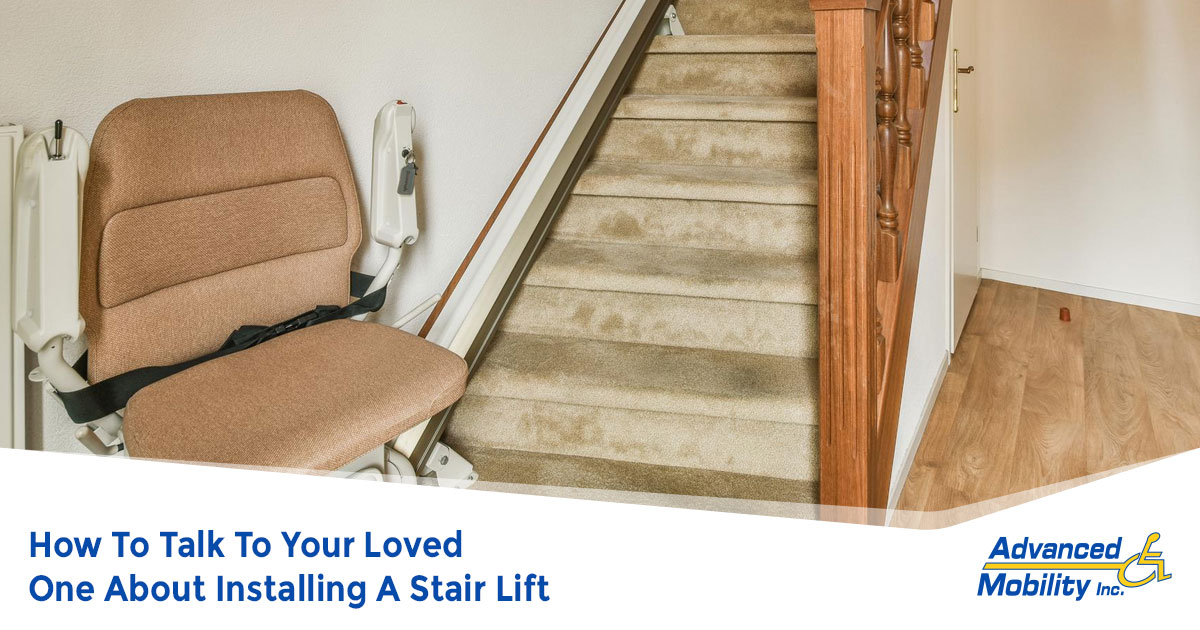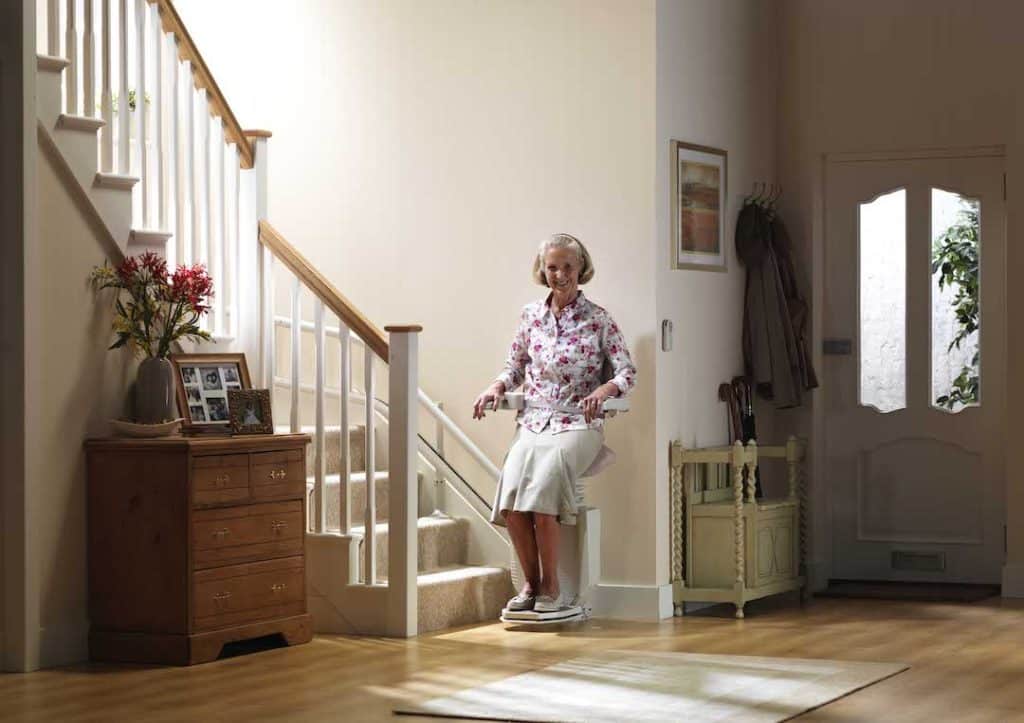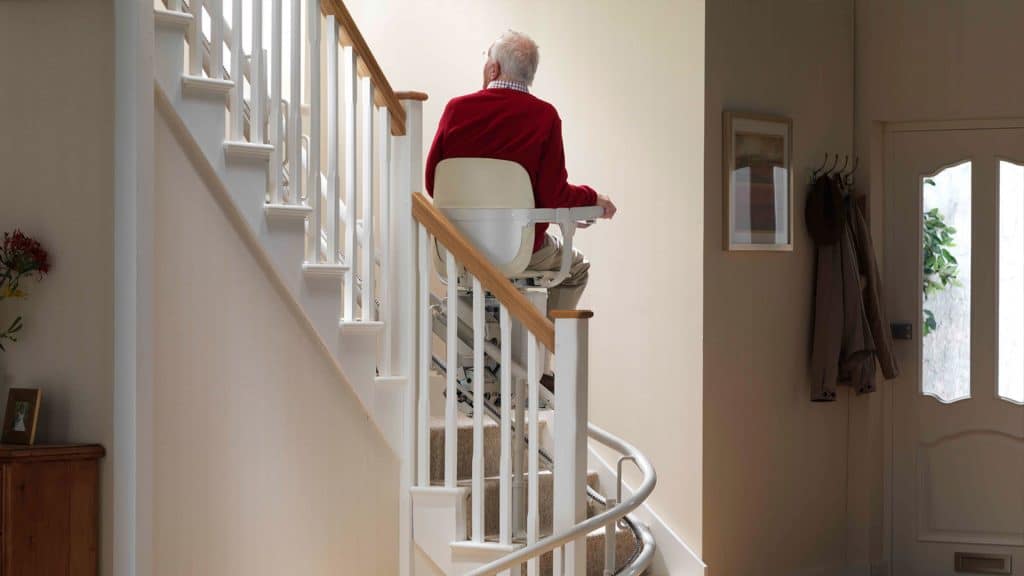A stair lift is a motorized chair that travels along a rail mounted to your staircase, allowing your loved one to move safely and easily between floors. It removes the challenge of climbing stairs, supports mobility and reduces fall risks. Installing a stair lift helps your family member maintain independence and enjoy their home with greater confidence.
Bringing up the idea of a stair lift can feel awkward or emotional when talking to your parent or loved one. You want to approach the subject with sensitivity and respect. This article aims to prepare you to have that conversation with clarity.
Recognizing the Signs That It’s Time for a Stair Lift
Knowing when to start the conversation about stair lift starts with noticing changes in daily routines. Small shifts in how your loved one moves around the house can reveal bigger challenges. You may notice them avoiding certain areas or taking longer to move between floors. The following are signs that it is time for a stair lift:
Moving Slower on Stairs
If your loved one climbs the stairs at a much slower pace, it can signal a loss of strength or balance. They might pause more between steps or grip the railing with both hands. While slowing down may feel safer, it can still raise the risk of a fall.
Taking longer to climb can also make the task more tiring. Over time, this can lead to frustration and reduced mobility between floors, limiting their ability to use their home.
Avoiding Stair Use
Some people choose to stay on one floor for most of the day to avoid the challenge of stairs. This can mean spending more time in less comfortable rooms and reducing access to the rest of the home.
When key areas like bedrooms or bathrooms are left unused, it changes how they live. Avoiding stairs is rarely a casual choice and usually points to a real mobility concern.
Feeling Tired after Climbing
If climbing stairs leaves your loved one out of breath or drained, it can discourage them from moving between floors. This can be linked to health conditions or a gradual decline in physical strength.
Tiring stairs use creates a barrier to independence. The harder the climb becomes, the more they may limit their movement, which can affect how engaged they stay in daily activities.
Experiencing Pain on Stairs
Pain in the knees, hips, or back during stair use can turn a short climb into a difficult task. It may lead them to lean on unstable supports like furniture or wall edges.
When pain is tied to using stairs, they may delay trips or avoid certain floors entirely. This not only changes daily habits but also increases the chance of injury.
Understanding Why They Might Resist the Idea
Before discussing reasons for installing a stair lift, it’s helpful to consider the topic from your loved one’s perspective. Resistance does not always come from stubbornness. In many cases, they may resist due to:
Emotional factors
- Fear of losing independence. Accepting help with mobility can feel like giving up control over daily life.
- Feeling old. Some see a stair lift as a symbol of aging rather than a tool for safety.
- Resisting change. Adjusting to new equipment in the home can be uncomfortable or unwanted.
Financial concerns
- Cost of purchase and installation. A stair lift can feel like a big expense, especially for someone on a fixed income.
- Uncertainty about long-term value. They may not be sure if they will use it enough to justify the cost.
Practical worries
- Aesthetics. They may think a stair lift will not match the home’s appearance.
- Space. There are concerns that the rail or chair is taking up too much room on the stairs.
- Disruption during installation. Worry about noise, mess, or time needed for the process.
Misconceptions
- Operation. Belief that the controls might be too complicated.
- Safety. Fears that the lift could malfunction or cause injury.
- Maintenance. Thinking it will require constant and expensive servicing.
Five Ways to Talk to Your Loved One About Installing a Stair Lift
Bringing up the idea of a stair lift can feel delicate, especially if your loved one values their independence. The goal is to approach the conversation in a way that feels supportive, not forceful. Here are five ways to talk to your loved one about installing a star lift:
Start with Safety and Quality of Life
Begin by explaining how a stair lift reduces the risk of falls and injuries. Talk about how it allows them to stay in their home longer without giving up the spaces they love. Present it as a tool that protects independence rather than takes it away. Focusing on the benefits for both safety and daily comfort can help them see it as a positive step.
Listen to their Concerns
Give your loved one the chance to share what worries them about the idea. They might mention cost, the look of the equipment, or doubts about whether it is necessary. Acknowledge their feelings instead of brushing them aside. Sometimes the first talk is just the starting point, and being patient shows respect for their perspective.
Share Real-life Examples
Stories can make the concept more relatable. Share with them the stories of friends, relatives, or community members who installed a stair lift and saw a significant improvement in their daily lives. If possible, arrange a visit or a video call so they can see one in use. Seeing how it works for someone else can remove uncertainty.
Offer to Help with Research
Take on some of the practical work that comes with exploring options. This can include calling reputable companies, collecting quotes, and arranging home assessments. Present them with a few good choices so they feel supported rather than overwhelmed. Your involvement shows that you are invested in finding the right stair lift for them.
Respect their Pace
Avoid pushing for an immediate decision. Suggest coming back to the conversation after they have had time to think about what you have discussed. Keeping the tone collaborative encourages them to take part in the decision-making process and makes them more likely to consider the change on their own terms.
Take the First Step Toward a Safer Home
Talking to a loved one about installing a stair lift is ultimately about protecting their safety and preserving their independence. When you approach the conversation with empathy and clear information, you help them see it as a positive choice rather than a loss of control. The goal is to keep them moving freely and comfortably in the home they love.
Advanced Mobility Inc. provides reliable stair lift solutions tailored to individual needs. From consultation to installation, our team makes the process straightforward and stress-free. Contact Advanced Mobility Inc. today to learn how we can help create a safer and more accessible home for your loved one.








